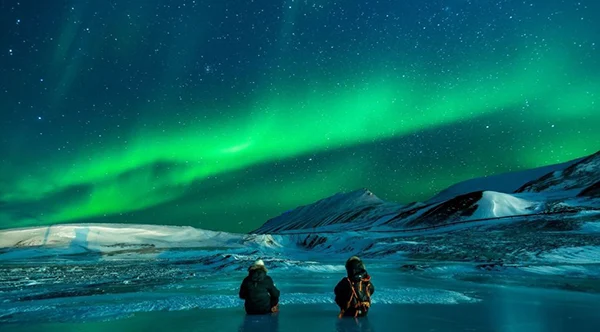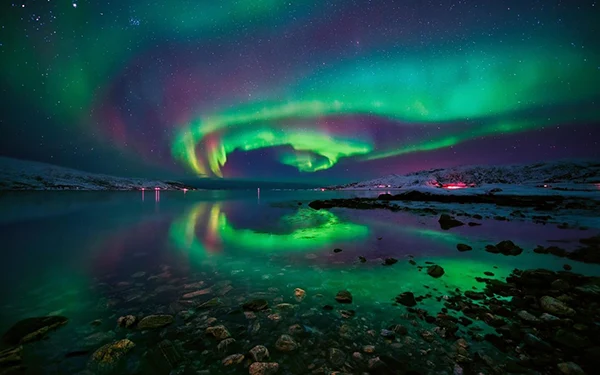How to Plan a Trip to See the Northern Lights in 2025: Best Locations and Tips
The Northern Lights, or Aurora Borealis, remain one of the most mesmerising natural phenomena, drawing thousands of travellers each year. Witnessing this celestial display requires careful planning, including selecting the right destinations, considering climate changes, managing expenses, and preparing for photography. This guide provides essential tips to help you organise a Northern Lights trip in 2025.
Best Places to See the Northern Lights
Travellers seeking the best Northern Lights experience must choose destinations within the auroral zone. Countries such as Norway, Sweden, Finland, Iceland, and Canada offer prime locations for witnessing this spectacle. Each region provides a unique backdrop, from snow-covered mountains to vast frozen lakes.
While the aurora is visible in several locations, some areas provide more consistent sightings due to clear skies and minimal light pollution. Scandinavian countries are particularly popular, with well-developed tourism infrastructure and guided aurora tours available for visitors.
Another important factor is accessibility. Some of the best viewing locations are remote, requiring additional travel arrangements such as flights, ferries, or long drives through winter landscapes. Booking accommodations close to these areas can improve your chances of experiencing the Northern Lights.
Top Northern Lights Destinations
Norway remains one of the most reliable places to see the Northern Lights. Tromsø, known as the “Gateway to the Arctic,” offers excellent visibility, while the Lofoten Islands provide stunning coastal scenery. Alta, another prime location, is famous for its stable weather conditions, increasing the likelihood of a successful aurora sighting.
Sweden’s Abisko National Park is renowned for having one of the clearest skies in the auroral zone, making it an ideal spot for those prioritising visibility. Finnish Lapland, particularly Rovaniemi and Kakslauttanen, offers comfortable glass igloos where visitors can enjoy the aurora without stepping outside.
In Iceland, Thingvellir National Park and Jokulsarlon Glacier Lagoon are among the best viewing locations. The country’s volcanic landscapes and geothermal hot springs provide a unique experience for aurora hunters. Canada’s Yukon and Northwest Territories also remain top choices, with vast, dark skies perfect for Northern Lights observation.
Impact of Climate Changes on Aurora Visibility
Climate changes have influenced weather patterns, potentially affecting Northern Lights visibility. Warmer temperatures in Arctic regions can lead to increased cloud cover, reducing the number of clear nights suitable for aurora viewing. This makes checking local weather forecasts even more critical before planning a trip.
Despite these challenges, 2025 is expected to be a strong year for solar activity, which plays a crucial role in aurora intensity. The more active the sun, the more vibrant and frequent the aurora displays, increasing the chances of witnessing this natural wonder.
Travellers should also consider visiting higher altitudes or areas with historically stable weather. Locations with dry climates and minimal precipitation tend to have clearer skies, which improves visibility even when solar activity is moderate.
Best Time of Year to See the Northern Lights
The Northern Lights are most visible between September and April, with peak viewing months from November to February. During this period, long Arctic nights provide maximum darkness, enhancing the intensity of the aurora.
Early autumn and late winter are also excellent times to visit, as these months offer slightly milder temperatures while still providing good visibility. In some locations, September and March offer a balance between clear skies and active solar conditions.
It is essential to avoid full moon nights when planning an aurora trip. The brightness of the moon can overshadow the aurora, reducing its visibility. Choosing the darkest nights increases the chances of seeing the Northern Lights in full detail.

Budget-Friendly Travel Tips
Experiencing the Northern Lights does not have to be expensive. With strategic planning, travellers can significantly reduce costs while still enjoying an unforgettable adventure. Booking flights and accommodations well in advance can help secure lower prices.
Many budget airlines, such as Norwegian, Ryanair, and easyJet, offer affordable flights to Scandinavian countries. Travellers should also consider using public transport rather than taxis, as this can greatly reduce expenses while travelling between cities and aurora viewing locations.
For those looking to save on accommodation, staying in hostels, budget lodges, or shared cabins can help cut costs. Some destinations also allow wild camping, which offers an authentic Arctic experience at no additional cost.
How to Find Affordable Accommodation
Many Northern Lights destinations offer budget-friendly stays, especially in Finland and Sweden. Remote cabins and eco-lodges often provide a more immersive experience at a fraction of the cost of high-end resorts.
In Iceland, renting a campervan can serve as both transport and accommodation, significantly reducing overall travel expenses. This option allows travellers to stay in rural locations without the need for costly hotel bookings.
Another way to save money is by joining group tours rather than booking private excursions. Many guided tours include transport, accommodation, and expert-led aurora chasing experiences at a more reasonable price.
How to Photograph the Northern Lights Without Expensive Gear
Capturing stunning aurora images does not require professional equipment. With the right settings and techniques, even budget-friendly cameras and smartphones can produce impressive results. The key is to adjust exposure, stability, and composition correctly.
A tripod is essential for keeping the camera steady during long exposures. Since the aurora moves across the sky, a slow shutter speed (5-20 seconds) combined with a high ISO (800-3200) and wide aperture (f/2.8 or lower) ensures the best results.
Modern smartphones have advanced night modes that can enhance aurora photography. Devices such as the iPhone 14 and Samsung Galaxy S23 have built-in settings designed for low-light photography, making it possible to capture the Northern Lights without professional gear.
Additional Photography Tips
Location matters when taking aurora photos. Travellers should move away from city lights and find a dark, open area with minimal obstructions. Mountains, forests, and lakes provide excellent foreground elements that enhance the overall composition.
Manual adjustments can improve photo quality. Reducing exposure time slightly when the aurora is bright prevents overexposure, while increasing exposure on dim nights ensures the aurora remains visible in the final image.
Patience is key when photographing the Northern Lights. Since the aurora’s intensity varies, taking multiple shots with different settings increases the likelihood of capturing the perfect image.





